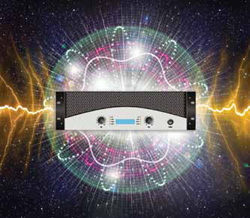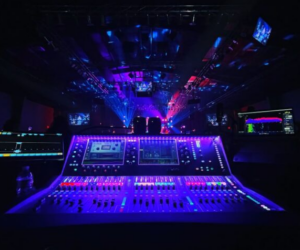In the classic sci-fi TV series Star Trek, Captain James T. Kirk of the Starship Enterprise frequently implored his chief engineer, Mr. Scott (a.k.a. “Scotty”), “We need more power!”
And Scotty always did his best to comply with the captain’s request, regardless of the complications of the situation.
Sound reinforcement system designers and engineers have made similar demands of power amplifier manufacturers, and like Mr. Scott, they’ve come through, and in spectacular fashion.
The modern power amplifier is light years removed (pardon the pun!) from the huge, heavy and inefficient designs of the recent past.
Current designs are also far lighter, and in some cases, come in a compact package that more resembles a rack-mount processor than a device capable of generating several thousand watts of audio power.
Consider that a decade or so ago, the flagship model of one of the leading amplifier makers delivered 2,000 watts per channel into 4 ohms, from a package weighing 77 (seventy seven!) pounds while occupying four full rack spaces.
Presently, that same company’s current flagship model provides 4,500 watts per channel into 4 ohms from a package that weighs just 28 pounds, and taking up only two rack spaces.
The primary advancement has been to make the brutes more efficient. Greater output efficiency means less heat, and therefore, less weight, as well as more AC power making it to the loudspeakers.
The most common amplifier topology now is Class D (and variations), which uses an on-off switching method for its transistors called Pulse Width Modulation. Because its output devices are either on or off, the efficiency of the amplifier is greatly increased, and this is done without jeopardizing the integrity of the audio waveform by switching positive and negative output transistors on and off many times per waveform cycle.
This method is analog, but similar in theory to digital sampling where a 44.1 kHz sampling rate is used to accurately capture a 20 kHz signal. This rapid switching creates a square wave that is then low-pass filtered to recreate the audio waveform.
Class G amplifier designs take a post-AB Class signal and switch it between two power supplies – one for softer output levels and other for louder. Efficiency improves as the power amplifier draws full power from the AC source when higher a level of amplification is needed.
Class H also works on the two-power supply output, but instead of simply switching between lower and higher voltage power supplies, the second power supply’s voltage level is controlled via the audio input signal. If the signal increases, so does the power supply’s voltage.
Class I, developed and patented by Crown Audio, is an advancement of the Class D switch-mode design. It helps eliminate a drawback of Class D – the potential for distortion in the moment that one transistor turns off and another turns on.
The addition of DSP into the package is a further enhancement, offering convenience, space and cost savings, operating efficiencies, performance advantages and more. Most modern amplifiers also benefit from networked control protocols, making them easier than ever to configure and monitor during a show.
There’s a lot to like when it comes to the modern power amplifiers, and a variety of options abound.
Enjoy this Real World Gear Photo Gallery Tour of premium models and series for sound reinforcement applications.
















